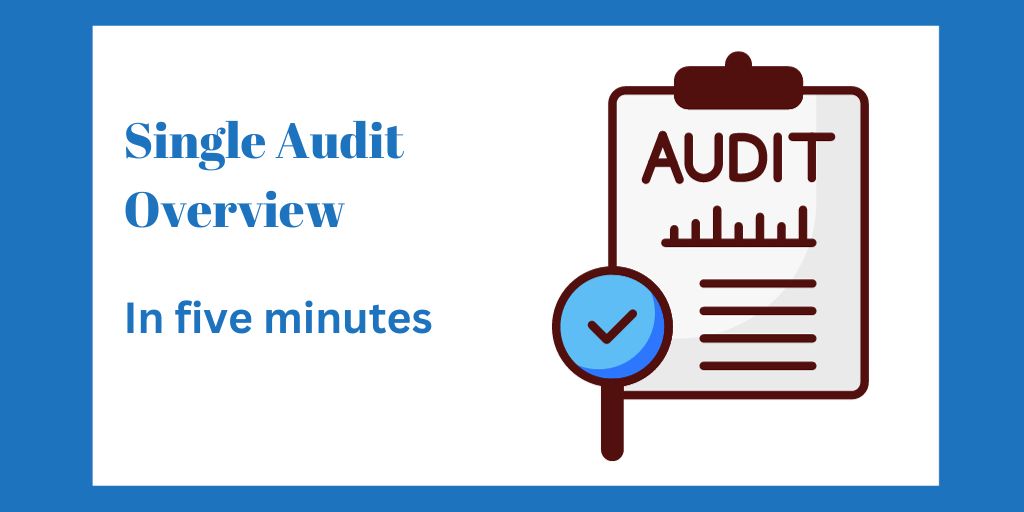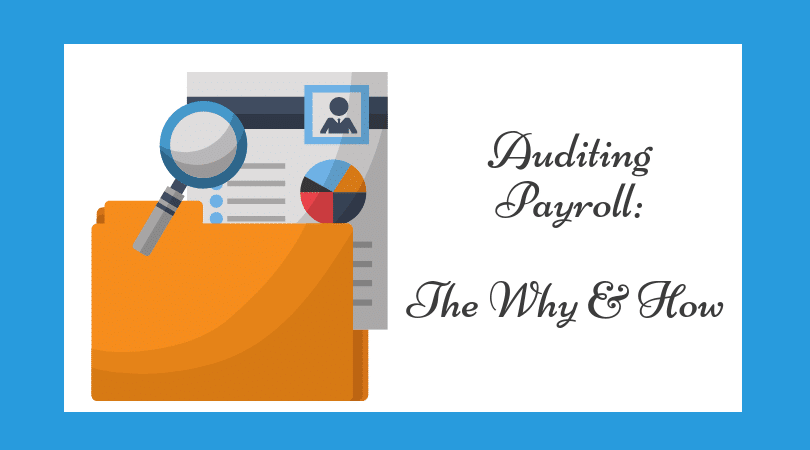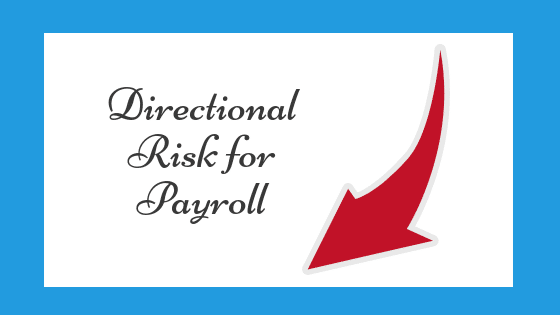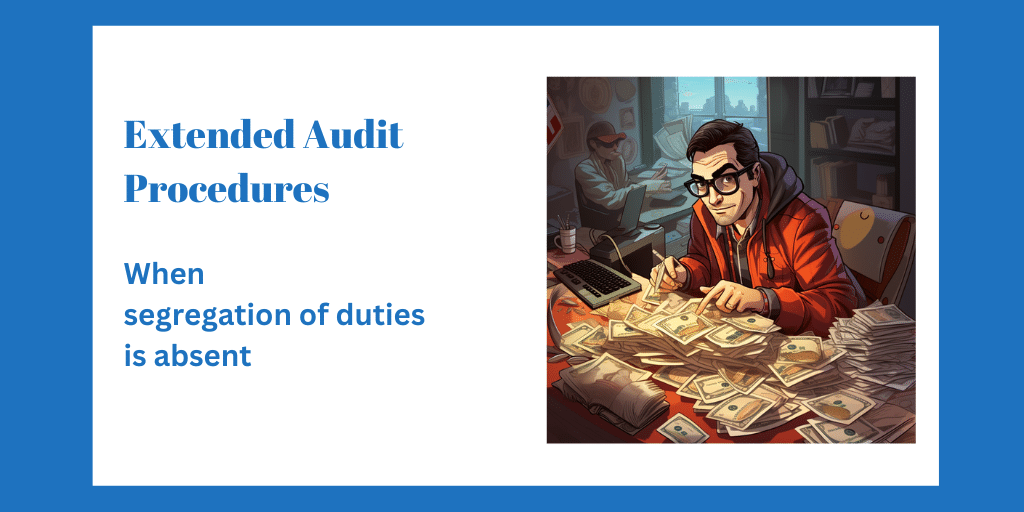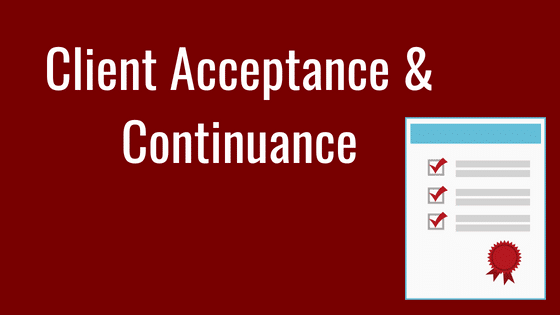
Client Acceptance: How to Do It Right
By Charles Hall | Auditing
Client acceptance and continuance may be the most critical step in an audit, but it’s one that gets little attention. A prospective client calls saying, “Can you audit my company?” and we respond, “sure.” While new business can be a good thing, relationships need appropriate vetting. Not doing so can lead to significant (and sometimes disastrous) consequences.
New Relationships
My daughter recently met a young man on Instagram. Not unusual these days. But now the relationship is entering into its third month. They talk every day for two or three hours. So far, they have not been in the same room—and not even in the same city. Skype, yes. Physical presence, no. That’s happening at the end of this month. (He lives eight hours away.)
So what do Mom and Dad think about all of this? Well, it’s fine. My wife checked him out on Facebook (I know you’ve never done this). And my daughter has told us all about the “fella” and his family. We like what we’re hearing. He has similar beliefs. He has a job (Yay!), and he has graduated from college. His family background is like ours.
Why do we want to know all the details about the young man? Because relationships impact people—my daughter, the young man, his family members, and yes, my wife and I. We want everyone to be happy.
Client Acceptance
And that’s what good relationships create. Happiness. The same is true with clients. As Steven Covey said, “think win, win.” When the customer wins, and your CPA firm wins, everyone is happy. Mutual needs are met.
Careless CPAs accept business with only one consideration: Can I get paid?
While getting paid is important, other factors are also critical.
Before accepting an audit engagement consider:
- Are they ethical?
- Are you independent?
- Do you have the technical ability to serve them?
- Do you the capacity to serve them?
Are They Ethical?
I want my daughter to marry a guy with beliefs that correspond with who she is. Is he honest? Would he steal? Is he transparent? Who are his associates? What do others think of him?
We ask similar questions about accepting a new client. Audit standards require us to consider whether the prospective client has integrity. If the company is not morally straight, then there’s no need to move forward. Ethics is a key to client acceptance.
(The predecessor auditor can provide information about their interactions with the company. Audit standards require contact with the predecessor auditor prior to acceptance. This is an initial year consideration.)
Are You Independent?
Independence is another key to client acceptance. And the time to determine your firm’s independence is the beginning—not at the conclusion of the audit.
Consider what happens—during a peer review—when a firm is not independent, and it has issued an audit opinion. The original audit report will be recalled, and I’ll bet the company asks for and receives a full refund of your audit fee. Now, the company needs to be re-audited. (Oh, and there’s that impact on the peer review report.)
Pay attention to requested nonattest services—such as preparation of financial statements. If the client has no one with sufficient skill, knowledge, and experience to accept responsibility for such services, you may not be independent. See the AICPA’s Plain English Guide to Independence for more information. (You can see additional help-aids in my list of online resources for CPAs. )
Do You Have the Technical Ability to Serve Them?
If you can pick up a client in an industry in which you have no experience, should you? Possibly, but it depends on whether you can appropriately understand the client and their industry before you conduct the engagement. Some new customers may not be complicated. In those cases, CPE may get you into position to provide the audit.
But what if the potential engagement involves a highly sophisticated industry and related accounting standards for which you are ill-equipped? It may be better to let the engagement go and refer it to an audit firm that has the requisite knowledge. Or maybe you can partner with the other firm.
Do You Have the Capacity to Serve Them?
A prospective client calls saying, “Can you audit my company? We have a December 31 year-end, and we need the audit report by March 31.” After some discussion, I think the fee will be around $75,000. But my staff is already working sixty hours a week during this time of the year. Should I take the engagement?
My answer would be no unless I can create the capacity. How? I can hire additional personnel or maybe I can contract with another firm to assist. If I can’t build additional capacity, then I may let the opportunity pass.
Far too many firms accept work without sufficient capacity. When this happens, corners are cut, and staff members and partners suffer. Stuffing—even more—work into a stressful time of the year is not (always) a wise thing. We lose staff. And if the engagement is deficient, peer review results may take a hit.
When you don’t have the capacity to accept new good clients, consider whether you should discontinue service to existing bad customers.
The Continuance Decision
Quality controls standards call for CPAs to not only develop acceptance procedures, but we are to create continuance protocols as well.
I previously said CPAs often don’t give proper attention to acceptance procedures. So, how about continuance decisions? Even worse.
Each year, we should ask, “If this was a new client opportunity, would I accept them?” If the answer is no, then why do we continue serving them?
Here are a few questions to ponder:
- Has the client paid their prior year fees?
- Am I still independent (consider the new Hosting Services interpretation)?
- Does the client demand more from me than the fee merits?
- Do I enjoy working with this client?
- Is the client’s financial condition creating additional risks for my firm?
- Is the client acting ethically?
Each year, well before the audit starts, ask these questions.
And then consider, is the bottom 10% of my book of business keeping me from accepting better clients? My experience has been that when I have the capacity, new business appears. When capacity is lacking, I don’t. The decision to hold on to bad clients is a decision to close the door to better clients. Don’t be afraid to let go.
Risk Assessment Starts Now
When should we start thinking about risk assessment? Now.
Whether you are going through the initial acceptance procedures or you are making your continuance decision, start thinking about risk assessment now. Assuming you accept the client, you’ll be a step ahead as you begin to develop your audit plan. Ask questions such as:
- How is your cash flow?
- Do you have any debt with covenants?
- Who receives the financial statements?
- Has the company experienced any fraud losses?
- How experienced is management?
- Why are you changing auditors?
Keep these notes for future reference and audit planning.
The Strangest Audit Ever
As I close this post, I thought I’d share an old war story. One where I did not perform client acceptance correctly. You’ll find this story hard to believe. But it’s true.


